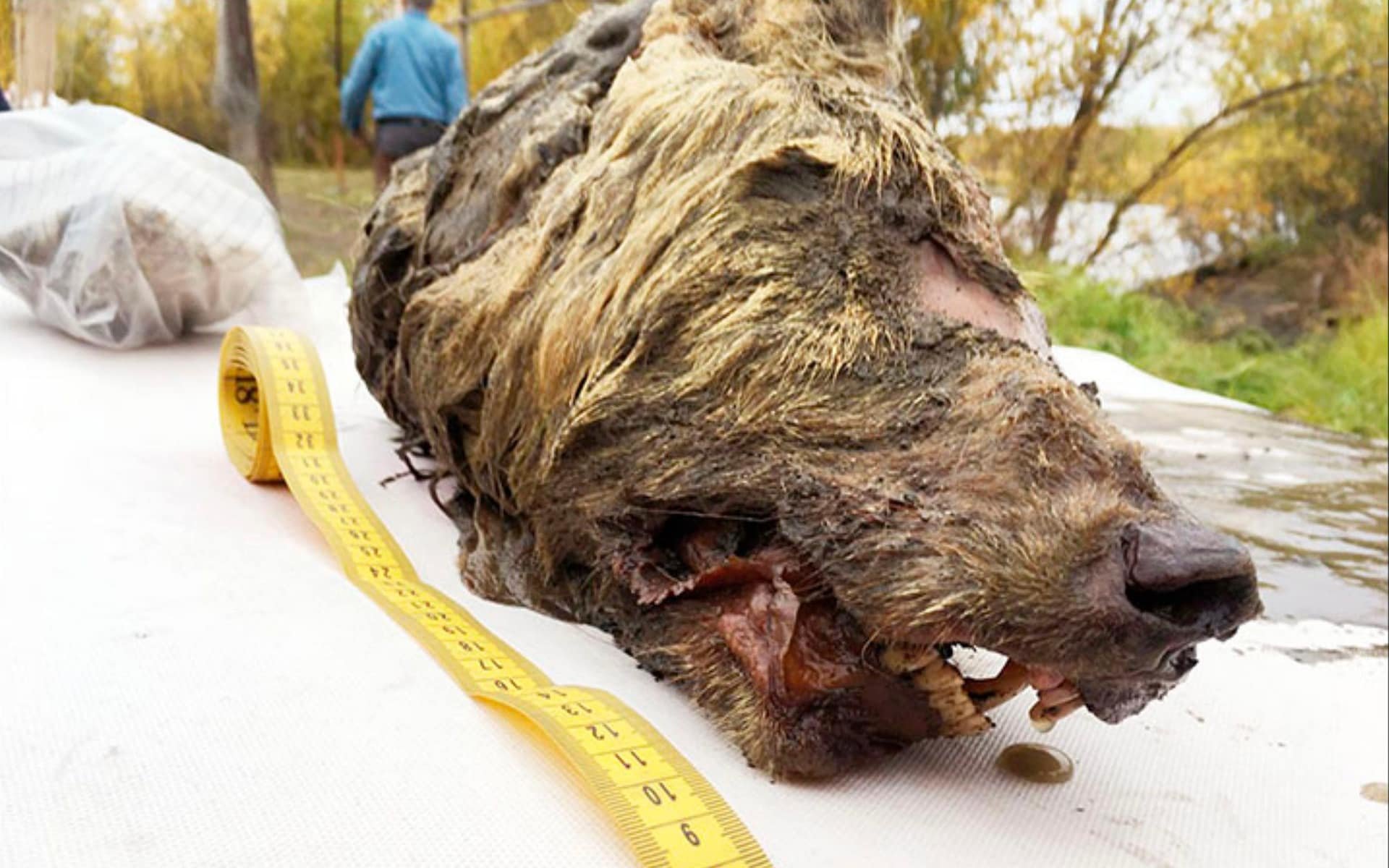The severed head of the world’s first full-sized Pleistocene wolf was unearthed in the Abyisky district in the north of Yakutia.
Local man Pavel Efimov found it in summer 2018 on shore of the Tirekhtyakh River, tributary of Indigirka.
Much of the wolf is still intact, including massive fangs and thick fur. Researchers estimate that it was somewhere between two and four years of age when it died.
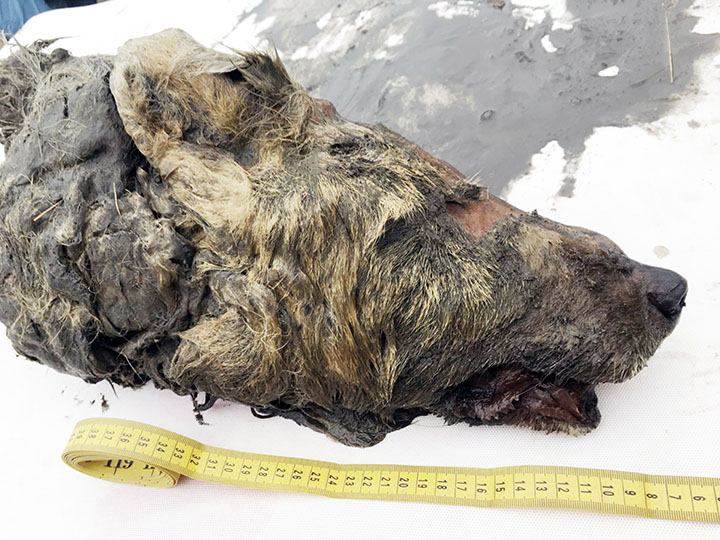
The head was dated older than 40,000 years by Japanese scientists.
Scientists at the Swedish Museum of Natural History will examine the Pleistocene predator’s DNA.
‘This is a unique discovery of the first ever remains of a fully grown Pleistocene wolf with its tissue preserved. We will be comparing it to modern-day wolves to understand how the species has evolved and to reconstruct its appearance,’ said an excited Albert Protopopov, from the Republic of Sakha Academy of Sciences.
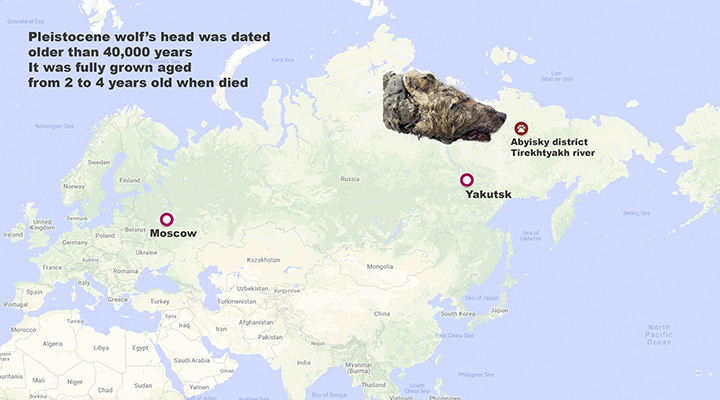
The Pleistocene wolf’s head is 40cm long, so half of the whole body length of a modern wolf which varies from 66 to 86cm.
The astonishing discovery was announced in Tokyo, Japan, during the opening of a grandiose Woolly Mammoth exhibition organised by Yakutian and Japanese scientists.
Still snarling after 40,000 years, a giant Pleistocene wolf discovered in Yakutia.
Sensational find of head of the beast with its brain intact, preserved since prehistoric times in permafrost.https://t.co/w4FoRB16Ur pic.twitter.com/8QbthEfay1— The Siberian Times (@siberian_times) June 8, 2019
Alongside the wolf the scientists presented an immaculately-well preserved cave lion cub.
‘Their muscles, organs and brains are in good condition,’ said Naoki Suzuki, a professor of palaeontology and medicine with the Jikei University School of Medicine in Tokyo, who studied the remains with a CT scanner.
‘We want to assess their physical capabilities and ecology by comparing them with the lions and wolves of today.’
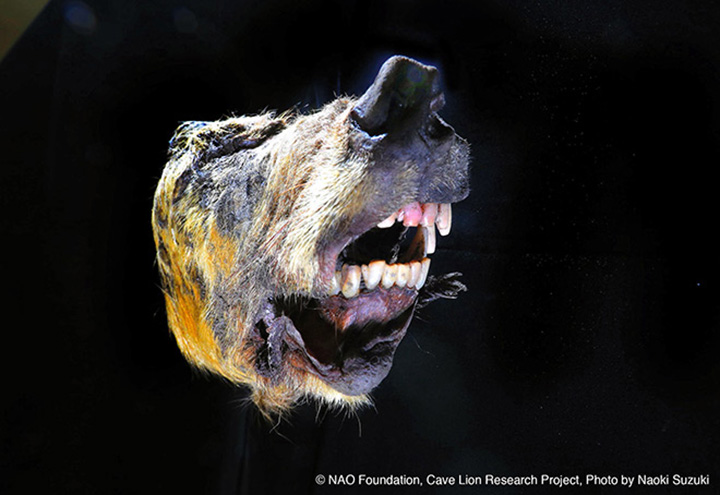
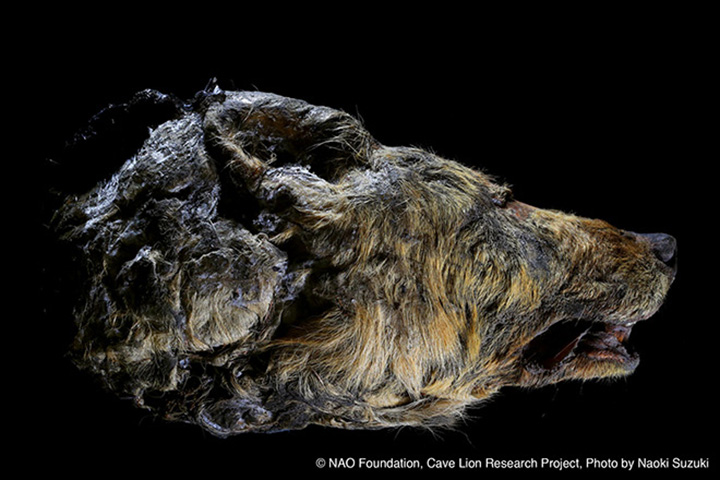
The cave lion cub named Spartak – previously announced – is about 40cm long and weighed about 800 grams.
Scientists believe the cub died shortly after birth.
The recent discovery follows that of the remains of three cave lions in 2015 and 2017 by the same team.
The cave lion cub named Spartak – previously announced – is about 40cm long and weighed about 800 grams. Pictures: The Siberian Times, YSIA
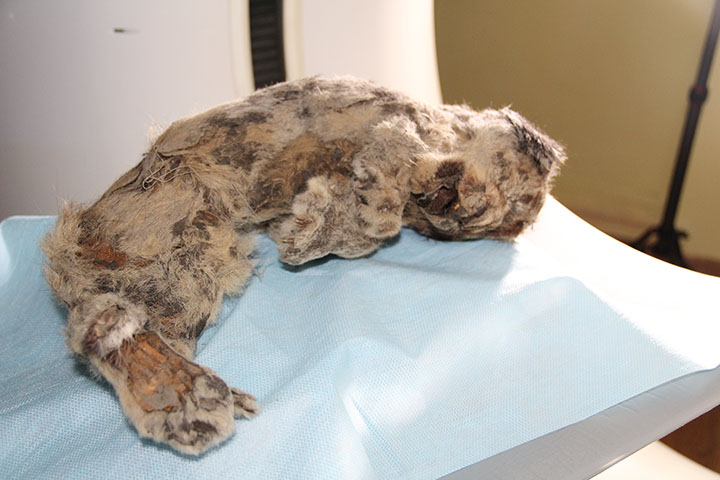
This most recent find is so important for scientists because it gives them much more to work with than just a fossil. These are samples that will provide them with far more data than they get from the samples they typically find, including DNA which can be used to get a more in-depth look into what life was like for these creatures during the last ice age.
In the past several years, other large extinct creatures from the ice age have been discovered by scientists.
One of the most amazing discoveries was that of an adult mammoth, which was estimated to have been alive roughly 50,000 years ago.
The creature was discovered preserved in permafrost on Kotelny island, in the north of Sakha Republic, half of which sits inside the Arctic circle. The creatures frozen remains were discovered in the permafrost on Kotelny island, in the north of Sakha Republic.
Experts believe that there could be countless other frozen creatures from the ice age in similar areas, where humans have not been able to fully excavate due to harsh weather conditions and frozen terrain. In fact, much of the earth remains unexplored by scientists and archeologists, especially areas that are extremely harsh environments.
